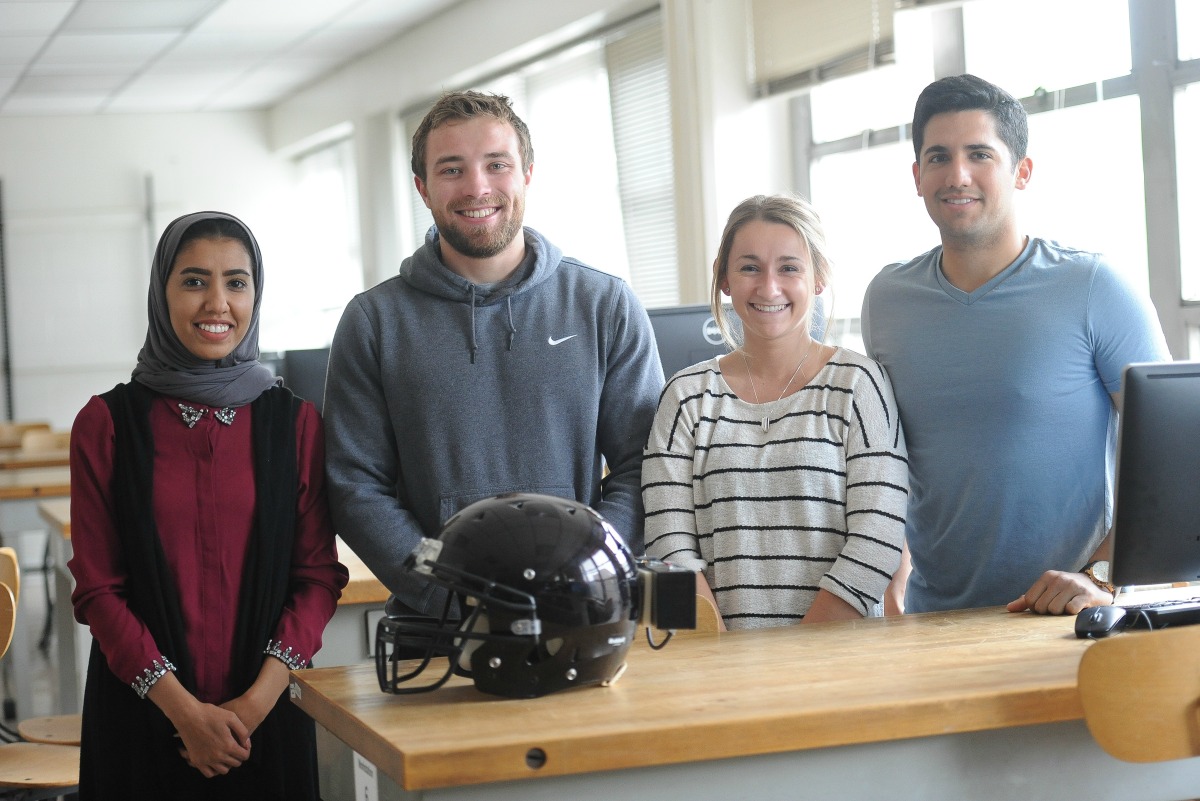

When he first began studying biomedical engineering at The Catholic University of America, 2016 graduate Michael Weldon never expected that he would incorporate his love of football into his research.
But Weldon, who played on the Catholic University football team throughout his four years of college, did just that, as part of his senior design project — a football training device meant to teach young players how to avoid concussions.
The project was the idea of engineering Clinical Assistant Professor Gregory Behrmann, who was inspired to build the device, which is unique on the market, after attending his nephew’s football game. Weldon worked on the project with three other 2016 graduates: Kevin Nader, a member of the University’s baseball team; Victoria Sudjian, a CUA lacrosse player; and Fatmah Aldossary, an international student from Saudi Arabia.
“Right now concussions in football are obviously a huge issue. It all starts at a young age so we really tailored this to that,” Weldon said. “We wanted to make a device that would be easy and successful for kids as a teaching device to help promote safe tackling and prevent head injuries.”
The goal was to promote a safer tackling method known as heads-up tackling. When football players tackle with their hands at their sides and their heads in an upright position, they are far less likely to incur serious head or neck injuries.
To do this, the students built a small device that attached to a standard football helmet. Inside the device is a wireless inclinometer attached to a speaker that emits a high-pitched noise. As the person’s head drops below a certain angle, the pitch gets louder, alerting them of dangerous behavior.
The device also contains a wireless transmitter that send data to a smartphone app. Using the app, coaches watching from the sidelines can see real-time data about a player’s head position.
Since finishing their prototype in the fall, the team spent the spring months testing the effectiveness of the device’s audio signal and app.
Behrmann, who previously worked as an industrial engineer for much of his career, said the purpose of senior design projects, which are required of all engineering students during their senior year, is to prepare them for the kinds of experiences they might face in real world engineering situations. On this project, he said, the students developed ideas, faced setbacks and a strict deadline, and had to develop workarounds.
“It really covered a lot of what you hope for,” he said. “It starts with a problem, finding a solution, and then using what they’ve learned in four years to make an impact.”
As student athletes, Weldon and Sudjian said they enjoyed working on a project designed to keep other athletes safe. In the future, the graduates say they hope to continue working on their device by making it smaller and more durable. They would also like to try testing the helmet with youth football leagues.
“Everybody keeps telling us to keep pursuing this device because there’s such a need,” Sudjian said. “It’s good to hear that it could make a difference.”